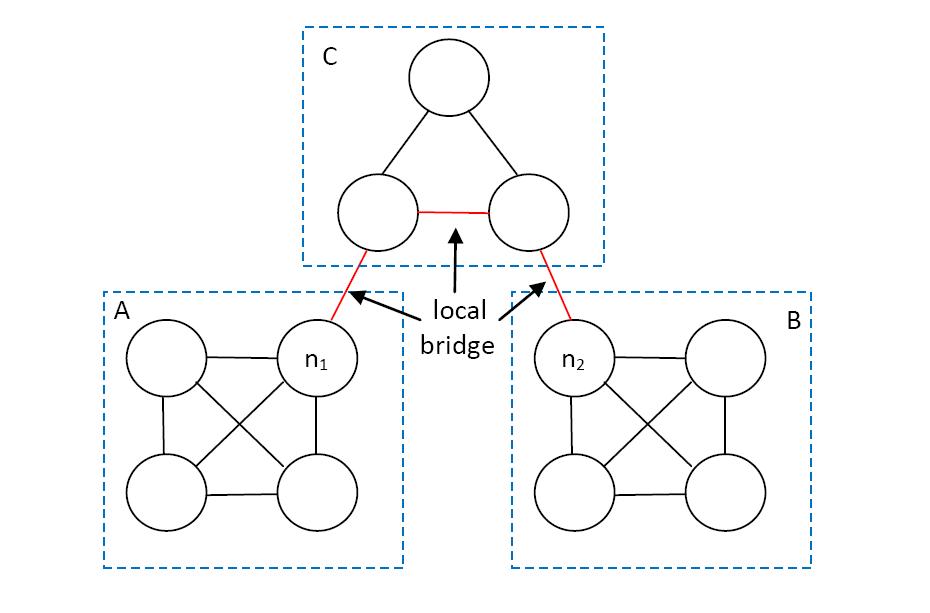.gif)
Bridge (interpersonal)
Encyclopedia
General Bridge
In general, a bridge is a direct tie between nodes that would otherwise be in disconnected components of the graph.This means that say that A and B make up a social networking graph,
 is in A,
is in A,  is in B, and there is a social tie
is in B, and there is a social tie  between
between  and
and  . If
. If  were to be removed, A and B would become disconnected components of the graph. This means that
were to be removed, A and B would become disconnected components of the graph. This means that  is a bridge.
is a bridge.
For example, A could represent a corporation and B Congress.
 could then be a lobbyist and
could then be a lobbyist and  a Congressman.
a Congressman.  would then represent the relationship between that corporation and Congress that only exists through the lobbyist.
would then represent the relationship between that corporation and Congress that only exists through the lobbyist.This is very similar to the concept of a bridge
Bridge (graph theory)
In graph theory, a bridge is an edge whose deletion increases the number of connected components. Equivalently, an edge is a bridge if and only if it is not contained in any cycle....
in graph theory, but with special social networking properties such as strong and weak ties.
Local Bridge
Local bridges are ties between two nodes in a social graphSocial graph
The social graph is a term coined by scientists working in the social areas of graph theory. It has been described as "the global mapping of everybody and how they're related"...
that are the shortest (and often the only plausible) route by which information might travel from those connected to one to those connected to the other. Local bridges differ from regular bridges in that the end points of the local bridge cannot have a tie directly between them and should not share any common neighbors.

Social Networking Implications
In social networks, bridges are used to transmit information from one group to another. The breadth of information spread depends heavily on the number and connectedness of the bridges available to the originators of the information. Author Malcolm GladwellMalcolm Gladwell
Malcolm Gladwell, CM is a Canadian journalist, bestselling author, and speaker. He is currently based in New York City and has been a staff writer for The New Yorker since 1996...
characterizes people that habitually act as bridges as Connectors in his book The Tipping Point.
Bridges and local bridges are powerful ways to convey awareness of new things, but they are weak at transmitting behaviors that are in some way risky or costly to adopt. Weak ties are able to spread awareness of a joke or an on-line video with remarkable speed, but political mobilization moves more sluggishly, needing to gain momentum within neighborhoods and small communities. McAdams observed that strong ties, rather than weak ties, played a much more dominant role in recruitment to Freedom Summer on college campuses in the 1960s.

